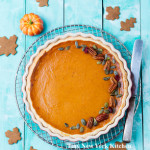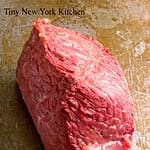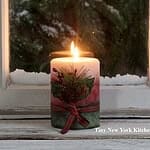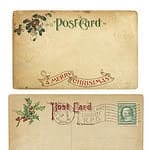Whether you’re hosting your first Thanksgiving or you’ve been making the family feast for decades, refer to our Thanksgiving timeline checklist to keep your prepping, shopping, and cooking on track for the big day.
1 TO 2 WEEKS BEFORE THANKSGIVING
Confirm the number of guests and plan your menu
Order your turkey
Plan your table setting, serving dishes, and decorations
Read through all your recipes to determine the food and cooking equipment you will need
Make your shopping and to-do lists
Shop for nonperishable food items, plus any cooks’ tools, cooking equipment and tableware you need
A FEW DAYS BEFORE
Prepare the turkey brine, but do not add the turkey, cover and refrigerate
Prepare food that can be made several days ahead of time, such as pie pastry and cranberry sauce
THE DAY BEFORE
Complete your food shopping
If you ordered a fresh turkey, pick it up or have it delivered
If you are brining the turkey, place it in the brine and refrigerate
Prepare dishes that can be made in advance such as soups and pies
Chop vegetables for side dishes; refrigerate in covered bowls or sealable plastic bags
Peel and cut the potatoes, place in cold water and refrigerate
Set the table
THANKSGIVING DAY
Refrigerate wines that need chilling
Prepare the stuffing and other side dishes
Prepare the turkey for roasting and put in the oven at the determined time
If you plan to stuff the turkey, do not stuff it until just before you put it in the oven
While the turkey is roasting, make the mashed potatoes
While the turkey is resting, make the gravy and cook or reheat the side dishes
Carve the turkey and serve your guests
Have a wonderful Thanksgiving!
“Work With What You Got!”
©Tiny New York Kitchen © 2018 All Rights Reserved
It’s that time of year again, in America, when the beer turns green and the aroma of corned beef and cabbage fills the air. The dish is so comforting, but just what is corned beef? The term has nothing to do with corn, but was the English term for a small granule, such as a grain of salt. In days before modern refrigeration, salting meat was a way to preserve it and keep it from spoiling.
Corned beef is an Americanized addition to the traditional Irish diet. While colcannon (boiled potatoes, cabbage, and leeks in buttermilk flavored with wild garlic) was a common Irish dish, as was brown soda bread, corned beef was produced primarily for export to England. Upon arriving in America, however, it’s thought the Irish chose to celebrate their holiday with food that was typically not available to them in their home country, so corned beef was added to the menu, as was white soda bread studded with currants and caraway.
Corned beef is typically made from beef brisket, which is a cut of meat from the breast or lower chest, but the rump, bottom round, and even tongue, can be used. In America, the term “corned beef” is used to describe both the cured meat and the canned stuff found on grocery store shelves. In Britain, they call the canned stuff “salt beef.”
To make corned beef the meat is simmered in a blend of corned beef spices that usually include peppercorns, garlic, mustard, tarragon, thyme, parsley, cloves, and nutmeg.
In New England, you most often see corned beef served as a St. Patrick’s Day main dish or in a sandwich. As the main ingredient in New England Boiled Dinner, corned beef often pairs with potatoes, carrots, turnips, and cabbage in a hearty, savory, brothy bowl of goodness. When used in a sandwich, the most popular corned beef sandwich is the Reuben. Considered the quintessential Jewish deli sandwich, a Reuben is toasted rye bread stuffed with hot slices of corned beef, usually piled high, and topped with sauerkraut, Swiss cheese, and either Russian or Thousand Island dressing.
In New England, a frequent point of interest is also whether you prefer red vs. gray corned beef. The difference is “Red” brisket is cured with nitrite, which gives the meat its signature color. “Gray” corned beef, which is considered the authentic New England variety, is not cured with nitrate, so color forms naturally as it brines.
If you have corned beef leftovers a New England favorite is corned beef hash, which is typically served for breakfast.
“Work With What You Got!”
©Tiny New York Kitchen © 2018 All Rights Reserved
Tiny New York Kitchen Wishes You & Your Family A New Year Filled With Prosperity, Joy, And Contentment. Wishing You A New Year Rich With The Blessings Of Love, Joy, Warmth, And Laughter. Wishing You Good Health, Happiness, And Success In The Coming Year And Always. Wishing You A Very Happy 2018!
“Work With What You Got!”
©Tiny New York Kitchen © 2018 All Rights Reserved
Tiny New York Kitchen Wishes You & Your Family A Very Merry Christmas
Twas the night before Christmas, when all through the house
Not a creature was stirring, not even a mouse;
The stockings were hung by the chimney with care,
In hopes that St. Nicholas soon would be there;
The children were nestled all snug in their beds,
While visions of sugar-plums danced in their heads;
And mamma in her ‘kerchief, and I in my cap,
Had just settled down for a long winter’s nap,
When out on the lawn there arose such a clatter,
I sprang from the bed to see what was the matter.
Away to the window I flew like a flash,
Tore open the shutters and threw up the sash.
The moon on the breast of the new-fallen snow
Gave the lustre of mid-day to objects below,
When, what to my wondering eyes should appear,
But a miniature sleigh, and eight tiny reindeer,
With a little old driver so lively and quick,
I knew in a moment it must be St. Nick.
More rapid than eagles his coursers they came,
And he whistled, and shouted, and called them by name;
“Now, DASHER! Now DANCER! Now, PRANCER and VIXEN!
On, COMET! On CUPID! On DONNER and BLITZEN!
To the top of the porch! To the top of the wall!
Now dash away! Dash Away! Dash away all!
As dry leaves that before the wild hurricane fly,
When they meet with an obstacle, mount to the sky,
So up to the house-top the coursers they flew,
With the sleigh full of toys, and St. Nicholas too.
And then, in a twinkling, I heard on the roof
The prancing and pawing of each little hoof.
As I drew in my hand, and was turning around,
Down the chimney St. Nicholas came with a bound.
He was dressed all in fur, from his head to his foot,
And his clothes were all tarnished with ashes and soot;
A bundle of toys he had flung on his back,
And he looked like a peddler just opening his pack.
His eye – how they twinkled! His dimples how merry!
His cheeks were like roses, his nose like a cherry!
His droll little mouth was drawn up like a bow,
And the beard of his chin was as white as the snow;
The stump of a pipe he held tight in his teeth,
And the smoke it encircled his head like a wreath;
He had a broad face and a little round belly,
That shook, when he laughed like a bowlful of jelly.
He was chubby and plump, a right jolly old elf,
And I laughed when I saw him, in spite of myself,
A win, of his eye and a twist of his head,
Soon gave me to know I had nothing to dread;
He spoke not a word, but went straight to his work,
And filled all the stockings; then turned with a jerk,
And laying his finger aside of his nose,
And giving a nod, up the chimney he rose;
He sprang to his sleigh, to his team gave a whistle,
And away they all flew like the down of a thistle.
But I heard him exclaim, ere he drove out of sight,
HAPPY CHRISTMAS TO ALL, AND TO ALL A GOOD-NIGHT!
www.tinynewyorkkitchen.com
“Work With What You Got!”
© Victoria Hart Glavin Tiny New York Kitchen © 2017 All Rights Reserved
The fat, jolly man who delivers toys to all good children in just one night is known by many different names throughout the world. In English-speaking countries he is most commonly referred to as Santa Claus or Father Christmas. The name Santa Claus comes from the Dutch Sinterklaas or Sint Nicolaas. Saint Nicholas was born in the third century in a part of Greece that is now Turkey. He devoted his life to helping the sick and needy, especially children, and was eventually made bishop of the city of Myra, which no longer exists. He was venerated throughout Europe and the date of December 6, said to be the day on which he died, was dedicated to him. From the thirteenth century onward, it became customary for bishops to hand out small gifts to children on this day. In many countries, December 6 is still the day on which Christmas presents are exchanged.
In early seventeenth-century England, as a show of resistance to the Puritan disapproval of traditional Christmas festivities, the spirit of Christmas was personified in the shape of a fat, bearded man dressed in green fur-lined robes, thus giving rise to Father Christmas. He was also known as Sir Christmas or Lord Christmas, although he was not yet associated with gift giving or children.
It was in North America that the modern image of Santa Claus was born, as colonists merged the legends of Saint Nicholas and Father Christmas. In his History of New York (1809), Washington Irving translated Sinterklaas as “Santa Claus.” This figure was given further shape by the classic poem “A Visit From Saint Nicholas,” better known today as “The Night Before Christmas,” which was first published in a New York newspaper in 1823. It was this poem that gave rise to the legend of Santa’s reindeer.
Contrary to legend, it was not the Coca-Cola company’s famous Christmas advertising campaigns of the thirties that first introduced Santa’s traditional red costume. The modern depiction of Santa in red was actually started in 1885 when a Christmas card designed by Boston printer Louis Prang went on sale.
“Work With What You Got!”
© Victoria Hart Glavin Tiny New York Kitchen © 2017 All Rights Reserved
Although religiously themed prints made by wood carvers date back to the Middle Ages, the Christmas card is a relatively recent tradition. The widespread exchange of homemade Christmas cards began in Britain in 1840, with the introduction of the first postal service, the Penny Post. The man who played a key role in setting up the Penny Post, Sir Henry Cole, commissioned London artist John Calcott Horsley to produce the first commercially printed Christmas card in 1843. One thousand copies of the card, which depicted a family party and scenes of the poor being clothed and fed, with the inscription “A merry Christmas and a happy New Year to you,” were placed on sale. The tradition took off over the next few years as printing methods improved and, by 1860, large numbers were being produced and mailed in Europe. In 1875, lithographer Louis Prang became the first printer to produce Christmas cards in the United States. Today approximately 2.2 billion Christmas cards are mailed each year.
“Work With What You Got!”
© Victoria Hart Glavin Tiny New York Kitchen © 2017 All Rights Reserved
The origins of the Yule log can be traced back to the Norsemen of northern Europe. Jol or Jule (pronounced “Yule”) was a festival celebrated on the Winter Solstice in honor of Joinir, also known as Odin, the god of ecstasy and death. Feasting and drinking would take place around bonfires, and fires would be lit in hearths.
This tradition spread to other parts of Europe, where tree worship was already part of pagan rituals. Households would venture into the woods on Christmas Eve and cut a log from an oak tree, which was then transported home, with much singing and merrymaking along the way. The log would be put on the fire, which would be kept burning for twelve days. This was believed to bring health and productivity to the family and their crops for the coming year and protect them from witchcraft and demons. When the fire was finally extinguished, a small piece of wood would be kept and used to light the next year’s log. Often the ashes would be scattered over the fields to ensure fertility.
Later on, the yule log was used as a decorative centerpiece for the Christmas table, and as stoves replaced giant household hearths, the pastry or chocolate logs we are familiar with today came into being.
“Work With What You Got!”
© Victoria Hart Glavin Tiny New York Kitchen © 2017 All Rights Reserved
The practice of hanging up stockings can be traced back to pre-Christian times. Germanic folklore tells of the god Odin’s annual Yuletime hunting party. Children would leave out their shoes filled with straw or sugar for Odin’s flying horse, and Odin would reward them by leaving small gifts in exchange. Later on, the practice was linked with Saint Nicholas. The story goes that a nobleman with three daughters had fallen on hard times and was unable to give his daughters dowries so that they could be married. Saint Nicholas wanted to help, but also remain anonymous, so he threw gold coins down the chimney. They landed in the girls’ stockings that had been hung by the fire to dry.
“Work With What You Got!”
© Victoria Hart Glavin Tiny New York Kitchen © 2017 All Rights Reserved
As the holidays approach, all the giant factories are kicking into high gear to provide Americans with monstrous piles of cheaply produced merchandise.
This year will be different.
It is time to think outside the box. Who says a gift needs to fit in a shirt box, wrapped in mass- produced wrapping paper?
Everyone — yes EVERYONE gets his or her hair cut. How about gift certificates from your local hair salon or barber? Gym membership? It’s appropriate for all ages that are thinking about some health improvement.
Who wouldn’t appreciate getting their car detailed? Small detail shops and car washes would love to sell you a gift certificate or a book of gift certificates.
Are you one of those extravagant givers who think nothing of plunking down the Benjamins on a foreign-made flat-screen TV? Perhaps that grateful gift receiver would like their driveway sealed, or lawn mowed for the summer, or driveway plowed all winter, or games at the local golf course.
There are a gazillion owner-run restaurants — all offering gift certificates. And, if your intended isn’t the fancy eatery sort, what about a half dozen breakfasts at the local breakfast joint?
Remember, folks this isn’t about big national chains — this is about supporting your hometown businesses with their financial lives on the line to keep their doors open.
How many people couldn’t use an oil change for their car, truck, or motorcycle, done at a shop run by the American working guy? Thinking about a heartfelt gift for mom? Parents would LOVE the services of a local cleaning person for a day. My computer could use a tune-up, and I KNOW I can find some young person who is struggling to get their repair business up and running.
If you are looking for something more personal then look to local crafts people spin their own wool and knit them into scarves. They make jewelry, and pottery and beautiful wooden boxes.
Plan your holiday outings at local, owner operated restaurants and leave your server a nice tip. And, how about going out to see a play or ballet at your hometown theatre.
Musicians need love too, so find a venue showcasing local bands.
Leave your mail carrier, trash guy or babysitter a nice BIG tip.
This is about caring about your neighbors, encouraging small businesses to keep plugging away to follow their dreams. And, when we care about our neighbors, we care about our communities, and the benefits come back to us in ways we could not imagine.
“Work With What You Got!”
© Victoria Hart Glavin Tiny New York Kitchen © 2017 All Rights Reserved















